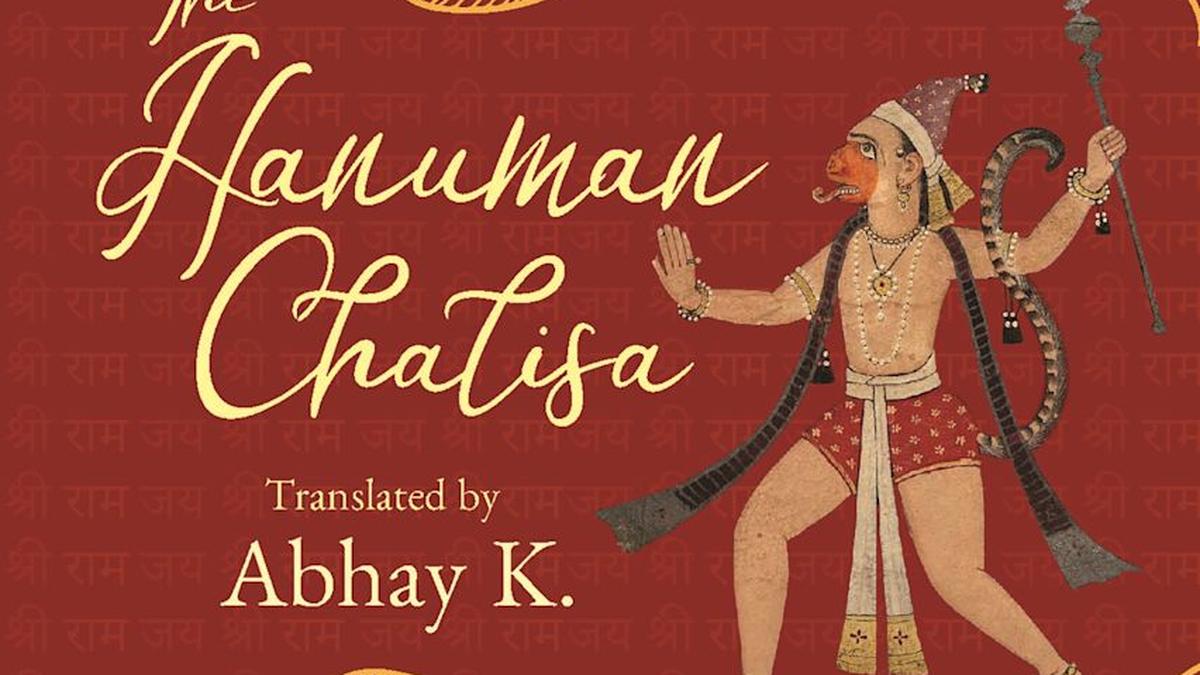Tum upkar sugrivahi kinha, Rama milaye rajpad dinha
Tumharo mantra vibhishana mana, Lankeshwar bhaye sab jag jaana
(Amity between Rama Sugriva sown, You helped him to reclaim his throne
Vibhishana receiving your counsel sane, The world knows, gained Lanka’s reign)
The couplets from Tulsidas’ Hanuman Chalisa deeply resonated with Abhay K., a career diplomat and prolific poet. “They reveal Hanuman not merely as an alliance-maker but as a kingmaker,” says Abhay, who currently serves as Deputy Director General of the Indian Council for Cultural Relations. His book, Hanuman Chalisa: Rediscover Hanuman’s Legacy in a Voice for Our Times, was launched recently.
“As a diplomat, I could see how he understood and aligned the interests of both parties. When Ram arrives in Kishkindha searching for Sita, Hanuman introduces him to Sugriv, who has been betrayed by his brother Bali. Later, he counsels Ravan’s brother Vibhishan to support Ram, assuring him the throne of Lanka in return.”
Abhay says the urge to translate came from bringing out a singable version of Hanuman Chalisa (Bloomsbury) in English. “I met a delegation from Trinidad and Tobago, and they said they need a spiritual text in English, but not in complex and dense English. They don’t understand Awadhi and Devanagri — the linguistic connections have diminished, but the spiritual bonds are intact. They wanted a translation that they could sing with music.”
There are several English translations of the Hanuman Chalisa, including a recent one by Vikram Seth. However, Abhay, who has previously translated Kalidasa’s Meghadūta, feels it’s difficult to capture the rhythmic and lyrical essence of the original. “Tulsidas wrote in Awadhi for its mass appeal. In Sanskrit, rhyming shlokas are rare. I drew on my experience as a poet to channel the energy of the original into English, keeping it simple and singable.”
Abhay drew on his experience as a poet to channel the energy of the original into English
| Photo Credit:
Special Arrangement
It is said that Tulsidas wrote the Hanuman Chalisa around 1575, when Akbar summoned him to Fatehpur Sikri to showcase his mystical powers, after the Ramcharitmanas had become a household name and stories of his encounters with Lord Ram and Hanuman reached the royal chambers. “According to a legend, when Tulsidas told the emperor he had no magical powers to bring the dead back to life, he was put behind bars. It was then that Tulsidas invoked Hanuman, and troops of monkeys wreaked havoc in Sikri,” says Abhay.
Describing the recent depiction of Hanuman as an angry god is a misconception, Abhay believes that the biggest quality of Hanuman is his humility. “Mahatma Gandhi described a true Satyagrahi to be like Hanuman, who believed in inner strength and selfless devotion.”
Hanuman Chalisa is introduced to children as a simple text to overcome the fear of ghosts and spirits, but Abhay holds that it carries deeper meanings that have kept scholars occupied over the centuries, making Hanuman a universal figure revered across different cultures. “A tool for mindfulness and focus, its verses are rich in metaphor and spiritual symbolism and offer guidance, reassurance, and empowerment in today’s fast-paced life.”
Abhay recalls how former U.S. President Barack Obama carried an image of a Thai Hanuman, known as Anuman, in his pocket. The authors also takes us back to the days when sailors navigating the Indian Ocean kept figurines of Anuman with them, believing in his power to safeguard their journeys.
“It is believed that the Andaman Islands were named after him. He is a link between the Shaivaite and Vaishnavite sects and has been a constant presence in different epochs. In the Mahabharat, he is present on the flag of Arjun’s chariot and teaches Bhim a lesson in humility. The Nawabs of Awadh initiated a Maha Mangal Festival, during which Hanuman was venerated every Tuesday. Now, followers of Neem Karoli Baba celebrate his living presence.”
There is a connection between the global appeal of the Hanuman Chalisa and Abhay’s historic account of Nalanda, which was released earlier this year and remains a bestseller. In Chinese folklore, a white monkey called Sun Wukong travelled with monk Xuanzang to India, protecting him from demons. Xuanzang visited Nalanda during the reign of Harshvardhan and took Sanskrit manuscripts with him for translation.
Hailing from Nalanda, Abhay has a great affinity with the place where the idea of university took shape. “The book is prescribed for the students of Nalanda University, which has been launched as a successor to Nalanda Mahavihara with students from 21 countries.”
For now, Abhay is focused on shaping the upcoming global conference on Indian civilisation. “We’ve named it INDIC — International Dialogue on Indian Culture. Scholars from 65 countries will explore the wide-ranging influence of Indian traditions on world culture,” he says.
Published – October 10, 2025 03:29 pm IST


